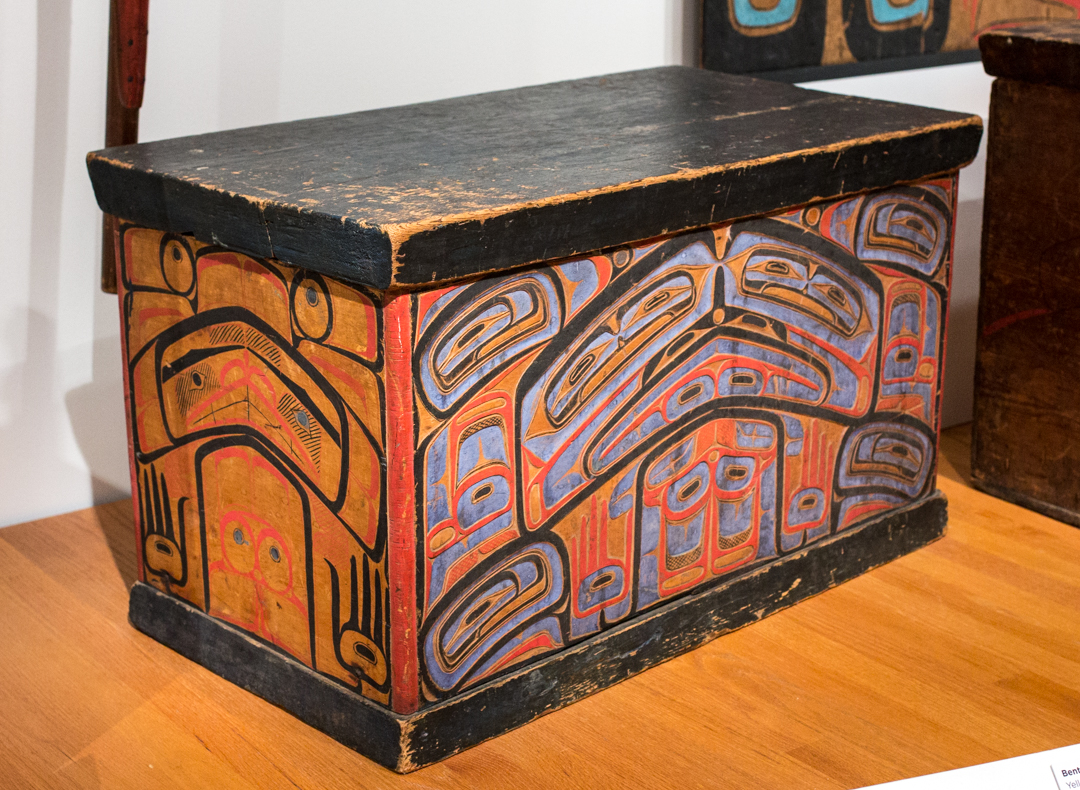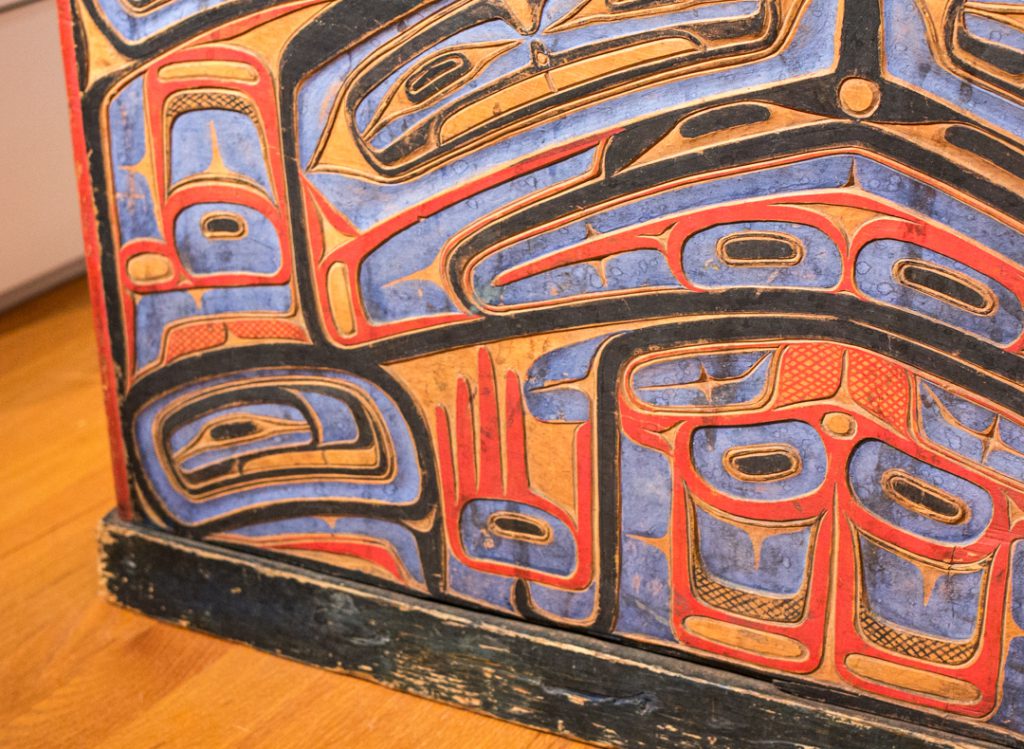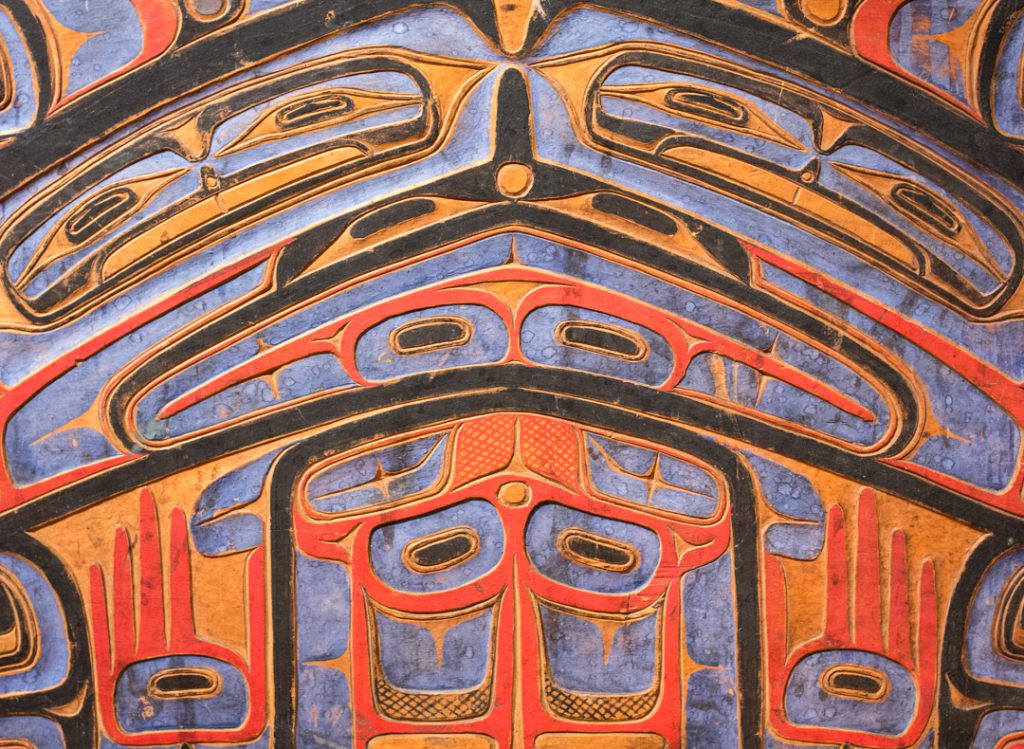Object of the Week: Bent-corner chest

Spewing facts can bore just about anyone, but there are some really good facts that are enchanting. Here’s a big hat tip to the Seattle Aquarium for its fun-fact billboards and ad banners around town, from which I’ve discovered how ridiculously sweet otters are and some other awesome tidbits. As in conversations about marine animals, facts figure importantly in talking about art because they illuminate the rare, remarkable, phenomenal aspects of great artworks. They lend substance to our imaginings on art and they can also inspire new thoughts and creative responses.
One simple fact about SAM’s Bent-corner chest spurred me on to investigate it further: The four sides of the chest have been formed from a single plank of wood. “Tell me more, chest!” I said.

It boggles my mind to think about forming four sides of a box from a single plank of wood, and apparently it boggles many minds because the bent-corner technique is unique to Native artists of the Northwest Coast. Beginning with a long plank of wood, the artists would shape the walls of the box by carving some portions thinner, readying the plank for folds. At the points where the plank will bend, they cut notches across the plank, called kerfs. Cutting the kerfs carves out the needed space for the wood to fold into itself. The plank is steamed—traditionally over hot rocks and seaweed—making it pliable enough to bend. From there, the artists make three folds, bringing the walls together at 90-degree angles. The fourth corner is joined together with an adhesive. The joined corner remains visible, so the makers would orient that corner toward the back of the room where the chest is placed, and the whole decorative program for the chest would be planned out accordingly, with the primary designs on the opposite, frontal side. It’s a show of perfect craftsmanship and thoughtful presentation.
The designs on SAM’s chest were executed by Captain Richard Carpenter, who is especially important as one of only a handful of named Native artists of the 19th century. Captain Carpenter’s English name communicates his role as a carver and boat maker, and he was also a second-ranked chief. The evenly distributed, sinuous formlines we see are characteristic of Captain Carpenter’s style, as are the large areas of negative space, enlivened with bright blue and red paint.1

Purpose and symbolism converge in the Bent-corner chest, which would have served as storage space—housing clan regalia and heirlooms—and as a seat for a chief. Literally supported by the chest and the items inside that represent the clan’s tradition, the chief has a physical connection to these objects of importance. He also assumes a position of symbolic power as the clan’s guide and protector, figuratively supported by its history.
What does your seat say about you?
—Jeffrey Carlson, SAM Collections Coordinator